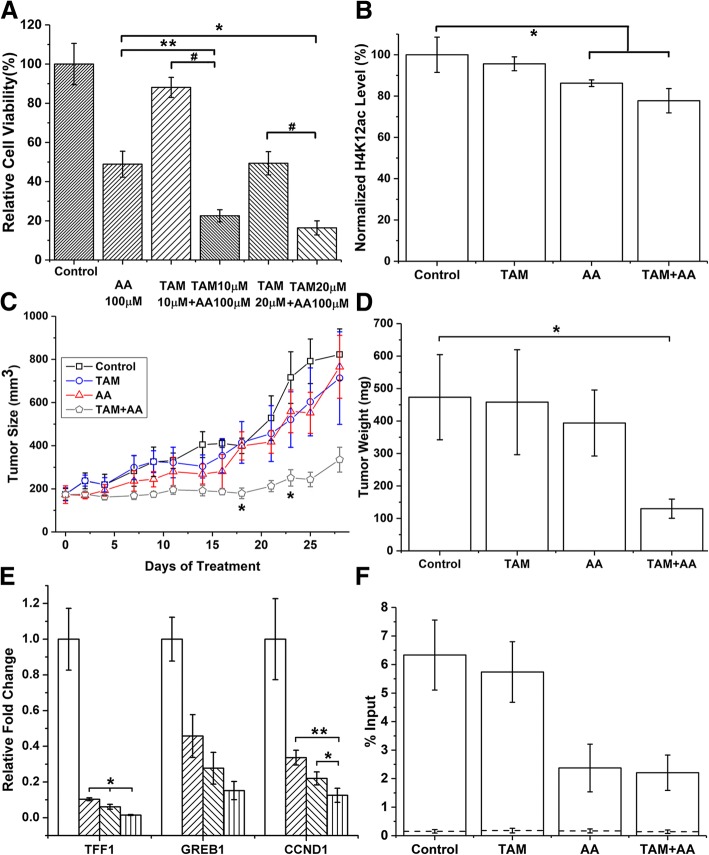Fig. 3.
Combination treatment based on FLIM-FRET screening. a Co-treatment of anacardic acid and tamoxifen affects MCF7 cell viability. After 48 h of treatment, co-treatment shows enhanced inhibition on cell viability. Each drug treatment was done in quadruplicate and values are averaged (n = 5, mean ± s.d.). b Global histone acetylation quantification of H4K12ac. MCF7 cells were treated with 10 μM tamoxifen and 50 μM anacardic acid for 24 h. Histone protein were extracted and assayed. Values are shown as mean ± s.d. from three independent experiments. c Tumor volume of MCF7 mice xenograft with co-treatment of tamoxifen (4 mg kg−1) and anacardic acid (1 mg kg−1) for a month. * indicates that the co-treatment group is significantly different from all other groups. (n = 5, mean ± s.e.m). d Tumor weight measured at the end of 1-month treatment. (n = 5, mean ± s.e.m). e MCF7 cells treated with tamoxifen and anacardic acid; the transcription level of three ER responsive genes was determined by qRT-PCR (n = 4, mean ± s.d.). Group from left to right as control  , TAM 10 μM
, TAM 10 μM  , AA 100 μM
, AA 100 μM  , and co-treatment of TAM and AA
, and co-treatment of TAM and AA  . f qRT-PCR was done with mice tumor for H4K12ac occupancy near GREB1 ERE in CHIP samples. CHIP-negative control with IgG antibody is shown as dashed line. (n = 2), values are mean ± s.d. of two independent experiments. *p < 0.05, **p < 0.01, #p < 0.0001
. f qRT-PCR was done with mice tumor for H4K12ac occupancy near GREB1 ERE in CHIP samples. CHIP-negative control with IgG antibody is shown as dashed line. (n = 2), values are mean ± s.d. of two independent experiments. *p < 0.05, **p < 0.01, #p < 0.0001

